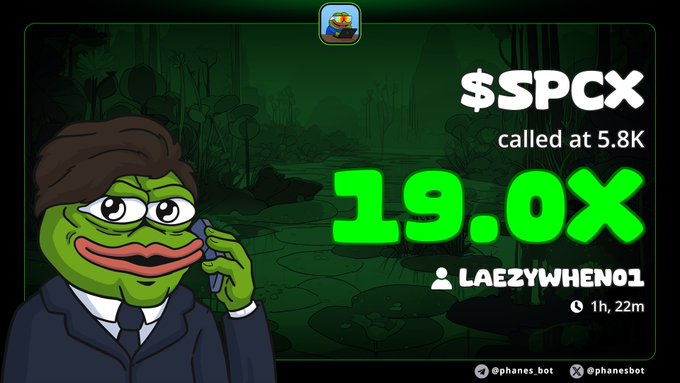SPCX: A Compliance Breakthrough in Private Equity Tokenization
On July 15, 2025, asset tokenization platform Paimon Finance launched the $SPCX token representing a SpaceX Special Purpose Fund on the HashKey Chain mainnet, making it the world’s first investment tool mapping SpaceX equity on-chain. Backed by licensed Hong Kong-based HashKey Group, the project establishes a Special Purpose Vehicle (SPV) in the British Virgin Islands (BVI) to hold SpaceX fund shares, minting tokens 1:1 on-chain. Investors can gain indirect exposure to SpaceX for just $220—only 1/1000 of traditional private equity minimums—with a 10–30% discount to secondary market pricing (SpaceX private equity averages $290).

This Token Insights article explores how SPCX leverages an on-chain SPV model to achieve compliant tokenization of SpaceX private equity, including its technical, legal, and investment structures.
Technical Architecture: Dual-Chain Deployment with Compliance at the Core
SPCX’s innovation lies in a three-layer integrated architecture:
-
Legal Layer: A BVI SPV independently holds the SpaceX fund stake, providing risk isolation and cross-border compliance. Legal advantages in BVI include tax exemption, shareholder anonymity, and no forex controls. The SPV is not required to disclose investor identities to the government, balancing privacy with regulation.
-
On-Chain Mapping Layer: The SPV’s rights are tokenized via smart contract into $SPCX on a 1:1 basis. Security token standards ensure traceability. Tokens are deployed on both HashKey Chain and BNB Chain—HashKey for institutional-grade compliance (with KYC/AML plugins), and BNB Chain for its liquidity-rich ecosystem.
-
Cross-Chain Interaction Layer: Hyperlane protocol ensures seamless dual-chain asset transfers. Future plans include integration with HashKey Exchange OTC to solve private equity liquidity challenges.
HashKey Chain is built on OP Stack, supporting 2-second block times and 0.1 Gwei gas fees. It offers RWA-specific smart contract templates, including dividend logic. Developers can refer to JuCoin’s RWA compliance guide for technical details.
Investment Model: Inclusive Access with Risk Controls
SPCX is built for accessible yet compliant participation:
-
Low Entry Threshold: Individuals can subscribe for as little as $220—99.5% lower than the $500,000 private equity minimum. Fiat and stablecoin payments are supported.
-
Allocation Controls: The total issuance is capped at $15 million. KYC is mandatory for individuals to prevent concentration of capital.
-
Liquidity Pathways: On-chain redemption and DEX trading are supported, with OTC to launch soon. If SpaceX goes public as expected in 2026, SPCX could be the first RWA token to see 100x returns.
Institutions have already subscribed to 70% of the allocation, primarily from Asian family offices and hedge funds, signaling professional validation of the model.
Compliance Framework: Coordination Between Hong Kong and BVI
SPCX relies on regulatory cooperation between Hong Kong and the BVI:
-
Hong Kong Penetrative Oversight: The Hong Kong SFC classifies SPCX as a security token, requiring prospectus-level disclosures. HashKey Chain’s licensing (SFC Type 1, 7, and 9) ensures trading compliance.
-
BVI Legal Shield: The SPV’s independent legal status avoids asset commingling. BVI courts follow English common law, providing internationally recognized dispute resolution.
-
Capital Reflow Mechanism: Mainland Chinese investors must use ODI approval or Circular 37 filing. SPV fundraising is lawfully converted and repatriated to domestic WFOE accounts, complying with forex regulations.
This model offers mainland enterprises a replicable RWA path—already validated by LongShine Tech’s tokenization of EV charging station revenues.
Risk Balance: Transparency Disputes and Exit Dependencies
Despite its potential, SPCX faces three key risks:
-
Asset Transparency: SpaceX is private; valuations rely on private market quotes (e.g., $350 billion in Q2 2025), posing manipulation risks. Paimon only commits to quarterly on-chain reserve proofs.
-
Legal Nesting: Cross-border legal action is costly. U.S. users may face IRS capital gains tax filings. Lawsuits in BVI require Commonwealth legal counsel, making retail legal recourse difficult.
-
Exit Bottlenecks: Once the $15M cap is reached, OTC premiums may arise. Returns are entirely contingent on SpaceX’s IPO timeline. If delayed, liquidity risks increase.
Similar tokenized equity projects see 35% annualized volatility, requiring high risk tolerance.
When private equity’s closed nature meets on-chain liquidity, and BVI privacy layers are bridged with Hong Kong’s compliance channels, traditional finance walls are reengineered by technology. SPCX is not just product innovation—it is a direct challenge to whether global capital democratization is possible. Its outcome may mark the turning point for the RWA sector’s evolution from tokenized bonds to tokenized equities.





